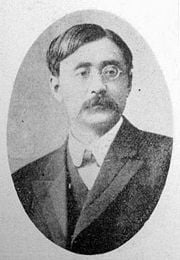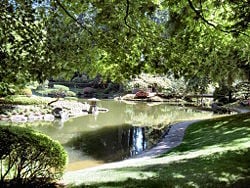U.S. Marine Allen Nelson first visited Okinawa in 1966 when the entire island was under American control and functioned as its springboard for the war in Vietnam. For two weeks, Nelson and his fellow new recruits spent their days practising guerilla warfare at Camp Hansen, central Okinawa, then in the nights, they headed into civilian areas to drink, fight and look for women. In later interviews, Nelson recalled drunken U.S. Marines beating taxi drivers and bar workers unconscious: “When we are coming to town, we don’t leave our violence on military bases. We bring our violence into towns with us.”
The next time Nelson visited Okinawa was 30 years later. This time when he visited local communities, he brought something very different: the message that the U.S. military presence on the island was unjust and the bases should be closed immediately.
What had happened in those intervening years to transform Nelson’s stance so profoundly has been explored in numerous Japanese books, TV shows and even a manga published in 2005 titled “Nelson-san, Anata wa Hito o Koroshimashitaka” (“Mr. Nelson, Did You Kill People?”). But very little has been written in English about the former marine and, although his story cuts to the core of current U.S.-Japan relations, he remains largely unknown in his home country.
Born in Brooklyn in 1947, Nelson, like many other African-Americans, benefited little from the economic boom heralded by U.S. victory in World War II. His father was absent and his mother raised Nelson and his four sisters in poverty; often there was not enough money for food and Nelson shared shoes with his sisters. After dropping out of high school, he was drawn to one of the few places that guaranteed a steady income to undereducated black males: the U.S. military.
In 1965, Nelson signed up for the U.S. Marines. Following his training in the U.S. and Okinawa, he was deployed to Vietnam where, for the next 13 months, he experienced combat so horrific that no amount of training could ever have prepared him. Nelson killed Vietnamese soldiers and saw his comrades killed beside him. He was wounded in an explosion and he participated in at least one execution of a prisoner.
What especially seared Nelson’s memories were the raids on villages where, following combat, he had to stack the civilian dead into piles — sometimes with surviving children clinging to their mother’s corpses.
In total, Nelson served four years with the U.S. Marines. After returning to civilian life, he found it impossible to readjust to peace time: the military had taught him how to kill but not how to live. Suffering from severe PTSD, he wound up homeless and it was only after years of counseling that he could begin to accept what he had experienced in combat.
Determined that other young Americans not suffer as he had, Nelson joined the Quakers, a pacifist Christian sect. He took part in demonstrations against overseas U.S. intervention and he led campaigns to oppose military recruitment in schools.
In September 1995, Nelson heard the news that three U.S. service members — including two U.S. Marines from Camp Hansen — had raped a 12-year-old girl on Okinawa.
“The news shocked Allen both as a former marine and a father. What also surprised him was the fact that U.S. bases were still on Okinawa. He’d assumed they’d all been closed after the end of the Vietnam War,” says Yutaka Ohata, a friend and long-term supporter of Nelson.
Through Quakers in Japan, Nelson was invited to visit Okinawa. In 1996, he arrived on the island and, at schools and community centers, he gave a series of talks about his service in the military.
“For many Okinawans it was the first time to learn about how Americans experienced the Vietnam War and what went on within the bases we lived alongside,” says Eiko Ginoza, a high school teacher who met Nelson during his first visit and became a life-long friend. “Allen told us about the nuclear weapons, chemical weapons and Agent Orange. He told us all the ways he’d been taught to kill — and we were very surprised.”
Nelson’s accounts of how Vietnamese civilians bore the brunt of combat also struck a chord with Okinawans whose island had lost more than a quarter of its residents during World War II.
His talks on Okinawa were so well-received that word of his eloquence soon spread to mainland Japan. Upon his return to the States, he was flooded with requests to come back and give lectures throughout Japan. So began 12 years of annual visits during which he racked up more than 1,000 speeches at schools, universities, temples and community centers.
Nelson’s visits punctuated a tumultuous time in Japanese politics with many similarities to today. In 2004, Tokyo attempted to start construction of a new U.S. base at Henoko, Okinawa, triggering widespread protests on land and sea. The government also tried to foist a more assertive international role on the nation’s Self Defense Forces — particularly in the Iraq War where it dispatched to Iraq more than 5,500 members of the Ground Self Defense Force between 2004 and 2006 to aid reconstruction. As with Prime Minister Shinzo Abe’s current ploy to reinterpret the role of the Japanese military, these moves were seen by many critics as attempts to undermine the Constitution’s Article 9, which renounces the use of military force.
Nelson was an ardent supporter of Article 9, arguing that it had saved Japan from becoming embroiled in misguided U.S.-led conflicts such as the Vietnam War.
During a speech in 2003, for example, he told the audience of Japanese high school students:
“Because Article 9 is there, no one in the world says that their land was bombed by Japanese bombers or their towns and villages were burned by Japanese troops; no one says that their children were killed or hurt by Japanese soldiers. In this sense Article 9 saved not only you Japanese people but also millions of other people.”
Following his talks at Japanese schools, children often asked questions that adults would never have asked: How does it feel to kill? Did he miss his mother in Vietnam? Had he been afraid to go to the toilet in the jungle?
“I started to understand: Little children, they understand war from the bottom up; adults, we try to understand from the mind. But we can’t understand the horror of war intellectually,” Nelson said.
In order to cap such painful discussions with a positive note, Nelson — an accomplished guitarist — often ended his talks with a spiritual song such as “Amazing Grace.”
These talks gradually made Nelson a well-known figure in Japan. From Hokkaido to Kyushu, all across the country he was invited to give lectures — as well as in Vietnam with NGO Peace Boat and at The Hague in the Netherlands. Okinawa, though, always retained a special place in his heart. According to Ginoza, Nelson believed the island’s poverty and history of Tokyo-backed discrimination mirrored his own experiences as an African-American.
During his frequent trips to Okinawa, Nelson visited Iejima Island near the main island’s northwestern coast where he met Shoko Ahagon — the founder of the postwar Okinawan peace movement. Then in his 90s, Ahagon had waged a decades-long campaign to reclaim farm land seized by the U.S. military in the 1950s. Apparently Nelson was so impressed by the elderly Okinawan that he likened Ahagon to Gandhi and Martin Luther King Jr.
Meetings with Ahagon and other Okinawan peace campaigners cemented in Nelson a strong sense of outrage against the U.S. presence on the island. He participated in demonstrations against the bases and railed against the authorities’ violent treatment of peaceful protesters.
Despite his outward displays of strength, however, Nelson still battled PTSD. Ohata realized this when he took Nelson on a hike into the hills of Gifu Prefecture to pick wild mushrooms; the veteran suddenly grew fearful of possible landmines and snipers. Fireworks festivals, a popular summertime event in Japan, were likewise a no-go zone.
The lectures, too, often left Nelson physically and mentally drained.
“Every time he talked about Vietnam, he had to go back there in his mind,” explains Ohata. “It was very hard for him to constantly return to combat in the jungles.”
In January 2009, Nelson discovered that his 13 months in Vietnam had not only taken a mental toll. Doctors diagnosed him with multiple myeloma — a form of bone marrow cancer — that Nelson believed had been sparked by exposure to Agent Orange in the jungles of Vietnam.
Hospitalized in the U.S., Nelson applied to the Department of Veterans Affairs for assistance. But as his condition worsened and his medical bills soared, it became clear that VA processing would take too long. His friends in Japan stepped in to help. They organized a collection to pay for his treatment and, to ensure the money arrived safely, they delivered it in person to Nelson in his hospital bed.
But the cancer was already too far advanced and on March 25, 2009, Nelson passed away. Three months later, his ashes were interred at one of the places where he had felt at peace in Japan — Kousenbou Temple in Kaga, Ishikawa Prefecture.
Although their collection couldn’t help Nelson’s condition, his friends realized that the remaining money could ensure that the former marine’s legacy would survive. In keeping with his belief that education was key for children to escape poverty, in 2010, his supporters established the Allen Nelson Fund to assist impoverished students in Vietnam.
Since its creation, the fund has distributed financial aid to more than 600 children. The most recent donation in February 2015 saw Okinawan representatives hand out aid to 120 youngsters living in Tam Ky City and Que Son District in Quang Nam Province. The fund gives priority to children who, like Nelson, come from single-parent families.
Nelson’s message also survives with those who knew him the best.
“Allen always used to say that Article 9 was stronger than any army. Today Article 9 is in danger more than ever before,” says Ginoza. “His words encourage us to keep opposing the destruction of the constitution and Henoko Bay. If Allen were alive today, he’d continue to build peace alongside us.”
Jon Mitchell writes about human rights issues on Okinawa. He received the 2015 Foreign Correspondents’ Club of Japan Freedom of the Press Award for Lifetime Achievement for his investigations into U.S. military contamination on Okinawa and other base-related problems.Your comments and story ideas:
community@japantimes.co.jp 

